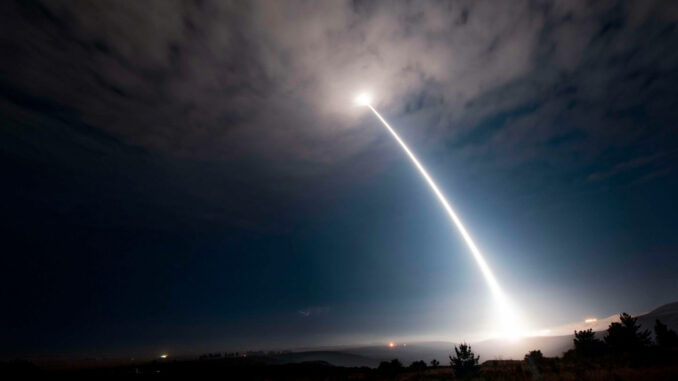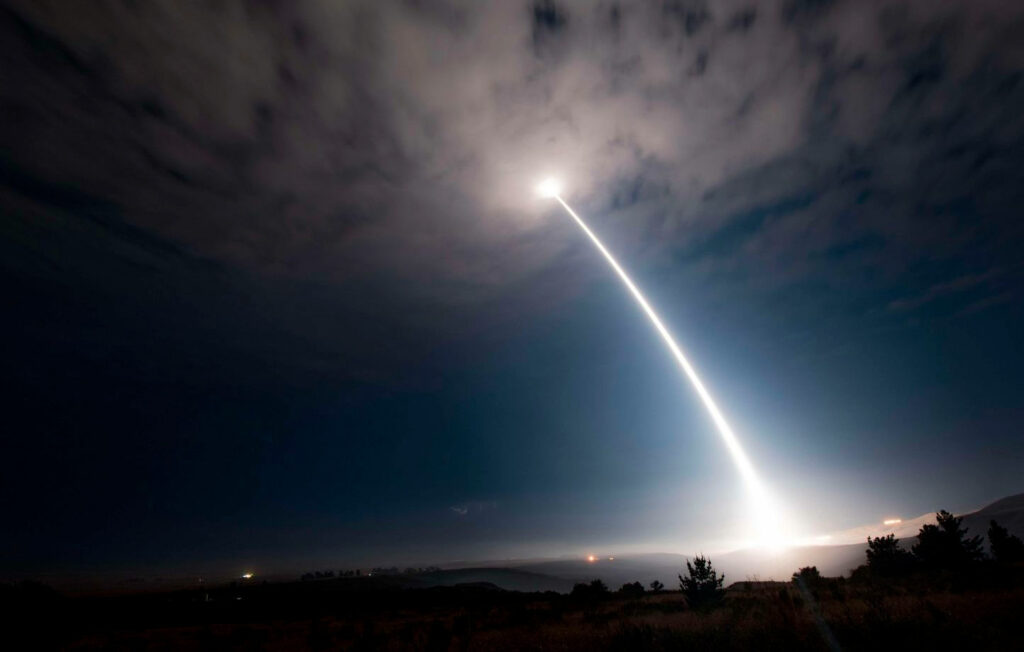
The US ICBM modernization program exceeds $140 billion
The US Air Force’s Sentinel program, intended to replace the Minuteman III intercontinental ballistic missiles, faces major challenges. Initially planned to reuse existing silos, tests revealed technical and financial problems, forcing the construction of new silos. This change has led to an 81% increase in costs, bringing the total budget to $140.9 billion. Despite these cost overruns, the Pentagon considers the program essential to national security.
The need to build new silos for Sentinel missiles
The Sentinel program, aimed at modernizing the United States’ land-based nuclear arsenal, was initially intended to reuse Minuteman III missile silos. However, tests carried out at Vandenberg Air Force Base revealed structural problems and unexpected costs associated with renovating these silos, which are more than 50 years old. These challenges led the US Air Force to decide to build new silos on land already owned by the federal government, particularly in the states of Colorado, Montana, Nebraska, North Dakota, and Wyoming.
This decision involves large-scale work, comparable to that of the interstate highway system in the 1950s. The construction of new silos requires modern infrastructure, including digital command and control systems, secure communication networks, and maintenance facilities adapted to current technologies.
The financial implications of the Sentinel program
The initial cost of the Sentinel program was estimated at $77.7 billion. However, recent analyses have revealed an 81% increase, bringing the total cost to $140.9 billion. This increase is attributed to the need to build new silos, the integration of advanced technologies, and unforeseen issues related to the conditions of existing sites.
In January 2024, these cost overruns triggered a review process under the Nunn-McCurdy law, which requires justification for the program in the event of significant budget overruns. The Pentagon concluded that, despite the costs, the Sentinel program is essential to maintaining a credible nuclear deterrent in the face of current threats.

Technical and logistical challenges of modernization
The modernization of the US land-based nuclear arsenal presents considerable technical challenges. The existing silos, designed in the 1960s, are not suited to the requirements of the Sentinel missiles, particularly in terms of size, launch systems, and security. In addition, the integration of digital command and control systems requires a complete overhaul of the existing infrastructure.
The construction of new silos also involves logistical challenges, such as coordination with local communities, management of environmental impacts, and training personnel in new technologies. The US Air Force must also ensure the continuity of nuclear deterrence during the transition by maintaining a sufficient number of operational missiles.
Geopolitical and strategic consequences
The Sentinel program comes at a time when countries such as Russia and China are modernizing their nuclear arsenals. By replacing the Minuteman III missiles, the United States is seeking to maintain a credible nuclear deterrent and ensure national security.
However, this modernization raises strategic questions. Some experts believe that the emphasis on land-based missiles could be reevaluated in favor of other components of the nuclear triad, such as ballistic missile submarines (SSBNs) and strategic bombers. Others are concerned about the risks associated with nuclear proliferation and escalating international tensions.
Outlook and recommendations
In light of the technical, financial, and strategic challenges facing the Sentinel program, several recommendations can be considered:
- Enhance transparency: Clear communication on the program’s objectives, costs, and timelines can strengthen public and international partner confidence.
- Evaluate alternatives: A thorough analysis of different modernization options, including a reassessment of the nuclear triad, can enable more efficient resource allocation.
- Involve stakeholders: Collaboration with local communities, security experts, and international allies is essential to ensure the program’s success.
- Ensure rigorous management: Strict oversight of costs and timelines can prevent future budget overruns and ensure that the program’s objectives are met.
War Wings Daily is an independant magazine.